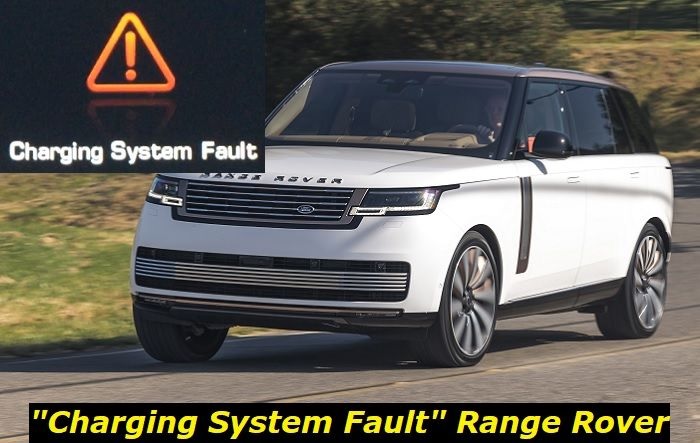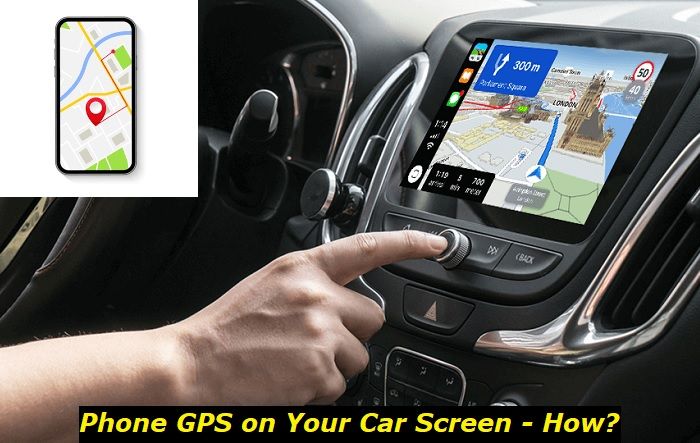When you hop into your Range Rover in the morning and turn the key, the battery light comes on. Don't panic yet, because that's normal. However, you should be concerned if the charging system fault warning error comes on the dash. This indicates that your battery isn't charging.
Charging system fault message highlights
- Common reasons:alternator, battery, or wiring problems
- How to fix:check the voltage in various conditions, charge the battery
- Possible consequences:when battery dies, you will get stranded
- Priority level:High
- Can you drive?Yes
- DIY repair:Possible but may be complicated
- Repair price range:$150-$800

Why Does This Show Up?
A dead battery is something you don't want to wake up to. When you see this light illuminating, you should have it inspected and fixed as soon as possible. The first thing to do is get to know and understand what causes this warning light to illuminate.
Unfortunately, there's no single answer to this question.
The failure could be caused by the normal wear and tear of the components of the charging system. There could also be an error during installation, or the alternator is broken. The good news is that visiting your Range Rover mechanic could erase the problem within minutes. A professional technician has all the knowledge and experience required to fix your vehicle's wiring and charging system issues.
These are some of the most probable causes of the charging system fault warning:
1) A Bad Battery
The charging system fault warning may show up because the battery is running on its last leg. It could be time to replace it, but before then, check out for other signs of a dying battery.
It's a good idea to grab a multimeter and measure the voltage on the battery terminals when the car is not running. It should be 12.4-12.5 volts. When the car is idling, the voltage on the terminals should be about 14.2-14.4 volts. If it's lower than that, either the battery or the alternator may be faulty.
But in Range Rovers, it was reported many times that the alternator works perfectly when the car is idling, and then, when you start driving, the voltage drops to 10-11 volts and the battery isn't being charged.
This is exactly the moment when the "Charging System Fault" error message illuminates in your RR.
2) Drive Belt Failure
The drive belt in your Range Rover is an accessory comprised of various parts working together. Also known as a serpentine belt, this accessory is charged with sending sufficient power to other parts of the vehicle from the engine, including the alternator. The Range Rover is a large SUV that requires an adequate power supply to work properly.
When the drive belt fails, it affects the proper functioning of the alternator, which causes the charging system to fail.
So, if you get this message, just have a look at the serpentine belt - you can see it without disassembling anything under the hood. If the belt isn't there or it doesn't run when the engine is running, you've just found the reason for the "Charging System Fault" error message.
3) Corroded Wires and Poor Connections
The battery is a crucial part of the electrical system of your Range Rover. And electrical systems comprise wires and connections. If there's a disconnection, the battery may not charge properly. Corroded wires also affect the correct flow of current from the engine to the alternator and the battery.
This is a common problem for a Range Rover that was flooded recently. Or maybe you spilled some water over the electrical parts and connections under the hood of the car. It may have been oil or antifreeze.
Also, some V6 Range Rover models are known to have an unpleasant head gasket leak when oil drops onto the alternator. This may cause quite a quick death of the alternator and the "Charging System Fault" message in your dash.
4) Faulty Voltage Regulator
A voltage regulator is a device used to regulate the voltage in electrical systems. The device keeps the voltage at constant levels to avoid too much or too little electrical supply. Located on the alternator, the voltage regulator monitors and regulates alternator output to ensure the battery and all other components of your car receive only what they need.
The voltage regulator ensures that the battery is healthily charged. If this vital component fails, it causes the battery to undercharge or overcharge, which could lead to severe damage to the battery or other parts of the charging system. This will result in a charging system fault warning since there's no consistent current flow.
5) ECU problems
One of the primary symptoms of a vehicle's dead computer system is when the check engine light stays on even after you've reset the system. When this system is faulty, it sends warning signals without reason.
ECUs usually die in high-mileage and old Range River vehicles. They get attacked by water, corrosion, they may also lose electrical connections, have rotten or chewed wires, etc. But we wouldn't say this is a very common problem for younger cars with relatively low mileage on their odometers.
6) Faulty Alternator
The alternator is your Range Rover's power station. It is the component that converts the mechanical energy from the engine into the electrical energy that powers the electrical components in your vehicle. And not only that, the alternator is responsible for the proper charging of the battery when the vehicle is in motion.
When this vital component goes bad, your vehicle will be running on battery only; all the mechanical energy produced by the engine goes to waste. On many occasions, the alternator is the primary reason your charging system fault warning comes up. You can take your Range Rover for a diagnosis. The mechanic will test the voltage from the alternator; if it's low, your alternator is either weak or damaged. Your mechanic should replace it with a new one.
How to Fix a Faulty Alternator
As mentioned earlier, the alternator is the power station of your Range Rover. The battery is only responsible for igniting the engine; the alternator is the device that keeps your vehicle's electrical system running. As such, it is a vital part that should be kept in perfect condition at all times.
The first step in fixing a lousy alternator is to check the drive belt. A damaged or loose serpentine belt will cause the alternator to fail.
If the belt has no faults, the next place you go is to the terminals. The alternator has a positive and a negative terminal, which can be affected by corrosion over time. If this is the case, you can clean them up since this corrosion affects the alternator's connection to the battery.
To clean the alternator terminals, disconnect them and use a wire brush to clean off the corrosion. Once the cleaning is done, reconnect and check if the problem is gone.
Once you checked the serpentine belt and it's tightly fixed in its place, you have cleaned the terminals, but if the problem persists, it could be time to replace the alternator. An alternator is a component that goes through normal wear and tear, so it won't last forever. In your Range Rover, this component will typically last around seven to ten years or 100,000 to 150,000 miles.
How to Fix Charging System Fault
Fixing the charging system and getting rid of the warning requires you to identify the faulty component - the primary cause of the alarm. There are videos of DIY guides to locate and fix a defective charging system component. If the battery is damaged, you can buy the correct size and model for your Range Rover and install it.
Is it the alternator that's gone bad? You can replace the component with a new one or have a professional rebuild and reinstall it. If there are corroded wires in your connection, have them cleaned or replaced.
What if nothing helps and you still see "Charging System Fault"?
It's not uncommon for Range Rover cars to have a persistent charging system failure warning message on the screen even after the battery and the alternator were fixed. In this case, there are two possible problems:
- the issue with wiring - some connections may have been corroded or loose;
- the problem with the ECU - it may remember this code or throw it by mistake.
If the problem is with the wiring, we strongly recommend going to the Land Rover dealership and having the car inspected. They have all the needed tools and trained mechanics to provide such complicated checks. You shouldn't mess up with the car's electrical system if you don't have the experience and tools for this.
If the issue is with the ECU, we would try to clean the error codes first and see if the code reappears after some time. If it reappears, there is still a problem and the ECU measures low voltage from the alternator. Maybe, the belt slips when you drive or the alternator overheats and loses its efficiency. More professional inspections are needed to find out the reasons.
How Long Can You Drive With the Charging System Fault Warning?
Is it safe to keep your vehicle running with the charging fault warning light on, and for how long? Yes, you can continue driving, but it is not safe. You could get stranded any minute. If your vehicle has a faulty battery, a bad alternator, a bad drive belt, or corroded wires and terminals, your SUV could just die and you will need a tow truck to deliver the SUV to the dealership.
The charging system fault warning light shows that the battery is not charging, which means you are driving on battery power only. Once this power is gone, the electrical system of your Range Rover will power down, and you will be stranded. Make an appointment with your service center for a mobile mechanic to be dispatched to your location. Once the technician has run the test to determine the problem, they will suggest what should be done.
Final Thoughts
A "Charging System Fault" means there's not enough charge flowing into the battery. Several factors, including a faulty alternator, will lead to this problem. While you can run an electrical system diagnostic at home, ensure you see a professional mechanic before the problem escalates and costs you more in repairs.
If you notice a problem that is easy to fix, like a bad battery, you can purchase and install it yourself. It's a matter of disconnecting the alternator terminals and lifting the battery. Even after that, it is good to run regular diagnosis of your electrical system for optimal performance of your Range Rover.
About the authors
The CarAraC research team is composed of seasoned auto mechanics and automotive industry professionals, including individuals with advanced degrees and certifications in their field. Our team members boast prestigious credentials, reflecting their extensive knowledge and skills. These qualifications include: IMI: Institute of the Motor Industry, ASE-Certified Master Automobile Technicians; Coventry University, Graduate of MA in Automotive Journalism; Politecnico di Torino, Italy, MS Automotive Engineering; Ss. Cyril and Methodius University in Skopje, Mechanical University in Skopje; TOC Automotive College; DHA Suffa University, Department of Mechanical Engineering






Add comment